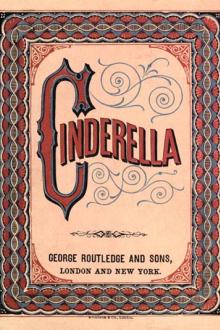The Bush Boys: History and Adventures of a Cape Farmer and his Family by Mayne Reid (i can read with my eyes shut .txt) 📕

Read free book «The Bush Boys: History and Adventures of a Cape Farmer and his Family by Mayne Reid (i can read with my eyes shut .txt) 📕» - read online or download for free at americanlibrarybooks.com
- Author: Mayne Reid
Read book online «The Bush Boys: History and Adventures of a Cape Farmer and his Family by Mayne Reid (i can read with my eyes shut .txt) 📕». Author - Mayne Reid
The striped hyena, although the best known, is in my opinion the least interesting of his kind. He is more widely distributed than any of his congeners. Found in most parts of Africa, he is also an Asiatic animal, is common enough throughout all the southern countries of Asia, and is even found as far north as the Caucasus and the Altai. He is the only species that exists in Asia. All the others are natives of Africa, which is the true home of the hyena.
Naturalists admit but three species of hyena. I have not the slightest doubt that there are twice that number as distinct from each other as these three are. Five, at least, I know, without reckoning as hyenas either the “wild hound” of the Cape, or the little burrowing hyena (Proteles)—both of which we shall no doubt meet with in the course of our hunting adventures.
First, then, we have the “striped” hyena already mentioned. He is usually of an ashy grey colour with a slight yellowish tinge, and a set of irregular striae, or stripes of black or dark brown. These are placed transversely to the length of his body, or rather obliquely, following nearly the direction of the ribs. They are not equally well defined or conspicuous in different individuals of the species. The hair—like that of all hyenas—is long, harsh, and shaggy, but longer over the neck, shoulders, and back, where it forms a mane. This becomes erect when the animal is excited. The same may be observed among dogs.
The common hyena is far from being either strong or brave, when compared with the others of his kind. He is, in fact, the weakest and least ferocious of the family. He is sufficiently voracious, but lives chiefly on carrion, and will not dare attack living creatures of half his own strength. He preys only on the smallest quadrupeds, and with all his voracity he is an arrant poltroon. A child of ten years will easily put him to flight.
A second species is the hyena which so much annoyed the celebrated Bruce while travelling in Abyssinia, and may be appropriately named “Bruce’s hyena.” This is also a striped hyena, and nearly all naturalists have set him down as of the same species with the Hyena vulgaris. Excepting the “stripes,” there is no resemblance whatever between the two species; and even these are differently arranged, while the ground colour also differs.
Bruce’s hyena is nearly twice the size of the common kind—with twice his strength, courage, and ferocity. The former will attack not only large quadrupeds, but man himself,—will enter houses by night, even villages, and carry off domestic animals and children.
Incredible as these statements may appear, about their truth there can be no doubt; such occurrences are by no means rare.
This hyena has the reputation of entering graveyards, and disinterring the dead bodies to feed upon them. Some naturalists have denied this. For what reason? It is well-known that in many parts of Africa, the dead are not interred, but thrown out on the plains. It is equally well-known that the hyenas devour the bodies so exposed. It is known, too, that the hyena is a “terrier”—a burrowing animal. What is there strange or improbable in supposing that it burrows to get at the bodies, its natural food? The wolf does so, the jackal, the coyote,—ay, even the dog! I have seen all of them at it on the battle-field. Why not the hyena?
A third species is very distinct from either of the two described—the “spotted hyena” (Hyena crocuta). This is also sometimes called the “laughing” hyena, from the peculiarity we have had occasion to speak of. This species, in general colour, is not unlike the common kind, except that, instead of stripes, his sides are covered with spots. He is larger than the Hyena vulgaris, and in character resembles Bruce’s, or the Abyssinian hyena. He is a native of the southern half of Africa, where he is known among the Dutch colonists as the “tiger-wolf;” while the common hyena is by them simply called “wolf.”
A fourth species is the “brown hyena” (Hyena villosa). The name “brown” hyena is not a good one, as brown colour is by no means a characteristic of this animal. Hyena villosa, or “hairy hyena,” is better, as the long, straight hair falling down his sides gives him a peculiar aspect, and at once distinguishes him from any of the others. He is equally as large and fierce as any, being of the size of a Saint Bernard mastiff, but it is difficult to imagine how any one could mistake him for either a striped or spotted hyena. His colour is dark brown, or nearly black above, and dirty grey beneath. In fact, in general colour and the arrangement of his hair, he is not unlike a badger or wolverine.
And yet many naturalists describe this as being of the same species as the common hyena—the learned De Blainville among the rest. The most ignorant boor of South Africa—for he is a South African animal—knows better than this. Their very appellation of “straand-wolf” points out his different habits and haunts—for he is a seashore animal, and not even found in such places as are the favourite resorts of the common hyena.
There is still another “brown hyena,” which differs altogether from this one, and is an inhabitant of the Great Desert. He is shorter-haired and of uniform brown colour, but like the rest in habits and general character. No doubt, when the central parts of Africa have been thoroughly explored, several species of hyena will be added to the list of those already known.
The habits of the hyenas are not unlike those of the larger wolves. They dwell in caves, of clefts of rocks. Some of them use the burrows of other animals for their lair, which they can enlarge for themselves—as they are provided with burrowing claws.
They are not tree-climbers, as their claws are not sufficiently retractile for that. It is in their teeth their main dependence lies, and in the great strength of their jaws.
Hyenas are solitary animals, though often troops of them are seen together, attracted by the common prey. A dozen or more will meet over a carcass, but each goes his own way on leaving it. They are extremely voracious; will eat up almost anything—even scraps of leather or old shoes! Bones they break and swallow as though these were pieces of tender flesh. They are bold, particularly with the poor natives, who do not hunt them with a view to extermination. They enter the miserable kraals of the natives, and often carry off their children. It is positively true that hundreds of children have been destroyed by hyenas in Southern Africa!
It is difficult for you to comprehend why this is permitted—why there is not a war of extermination carried on against the hyenas, until these brutes are driven out of the land. You cannot comprehend such a state of things, because you do not take into account the difference between savage and civilised existence. You will suppose that human life in Africa is held of far less value than it is in England; but if you thoroughly understood political science, you would discover that many a law of civilised life calls for its victims in far greater numbers than do the hyenas. The empty review, the idle court fête, the reception of an emperor, all require, as their natural sequence, the sacrifice of many lives!
Von Bloom now reflected that the hyenas were likely to prove a great pest to him. No meat, nor anything, would be safe from them—even his very children would be in danger, if left alone in the camp; and no doubt he would often be compelled to leave them, as he would require the older ones upon his hunting excursions.
There were other animals to be dreaded still more than the hyenas. Even during that night they had heard the roaring of lions down by the vley; and when it was morning, the spoor showed that several of these animals had drunk at the water.
How could he leave little Trüey—his dear little Trüey—or Jan, who was not a bit bigger—how could he leave them in an open camp while such monsters were roving about? He could not think of doing so.
He reflected what course he should pursue. At first he thought of putting up a house. That would necessarily be a work of time. There was no good building material convenient. A stone house would cost a great deal of labour—as the stones would have to be carried nearly a mile, and in their hands too. That would never do, as Von Bloom might only remain a short while at that place. He might not find many elephants there, and of course would be under the necessity of going elsewhere.
Why not build a log-house? you will say. That would not be so much of a job, as part of the country was well wooded, and they had an axe.
True, part of the country was wooded, but in a particular manner. With the exception of the nwana-trees, that stood at long distances apart—and regularly, as if they had been planted—there was nothing that deserved the name of timber. All the rest was mere “bush,”—a thorny jungle of mimosas, euphorbias, arborescent aloes, strelitzias, and the horrid zamia plants, beautiful enough to the eye, but of no utility whatever in the building of a house. The nwanas, of course, were too large for house-logs. To have felled one of them would have been a task equal almost to the building of a house; and to have made planks of them would have required a steam saw-mill. A log-house was not to be thought of either.
Now a frail structure of poles and thatch would not have given sufficient security. An angry rhinoceros, or elephant, would level such a house to the ground in a few moments.
Suppose, too, that there were man-eaters in the neighbourhood. Swartboy believed that there were, and that that region was notorious for them. As it was not far from Swartboy’s native country, Von Bloom, who had reason to believe what the Bushman told him, was inclined to credit this. What protection would a frail house afford against the man-eater? Not much, indeed.
Von Bloom was puzzled and perplexed. He could not commence his hunting excursions until this question was settled. Some place must be prepared, where the children would be safe during his absence.
While revolving the subject in his mind, he happened to cast his eyes upward among the branches of the nwana-tree. All at once his attention became fixed upon those huge limbs, for they had awakened within him a strange memory. He remembered having heard that, in some parts of the country, and perhaps not very far from where he then was, the natives live in trees. That sometimes a whole tribe, of fifty or more, make their home in a single tree; and do so to secure themselves against savage beasts, and sometimes equally savage men. That they build their houses upon platforms, which they erect upon the horizontal branches; and that they ascend by means of ladders, which are drawn up after them at night when they go to rest.
All this Von Bloom had heard, and all of it is positively true. Of course the reflection occurred to him, why could





Comments (0)